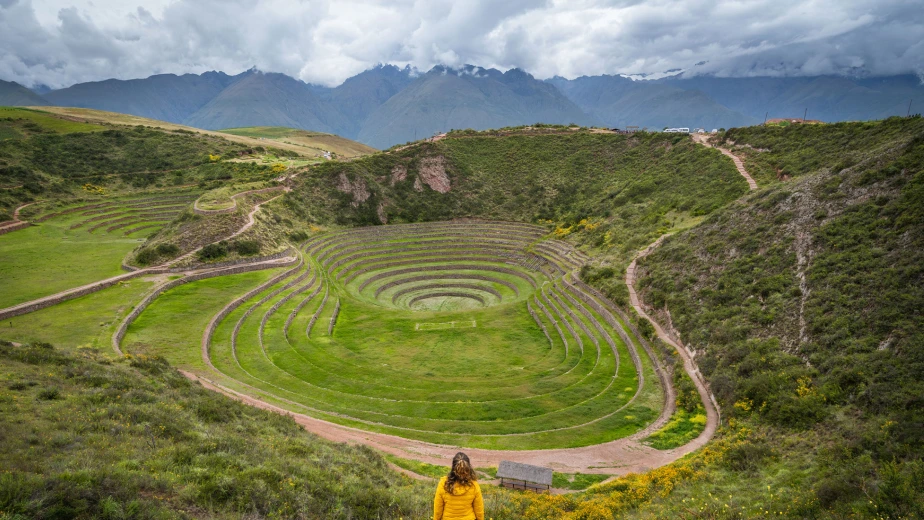If you’re thinking of visiting the Sacred Valley of the Incas in March, it’s important to know that this month is still part of the rainy season in Cusco. This means it may rain on some days, but not all the time. On the plus side, the landscapes are especially green and full of life, making the views truly stunning.
Also, because it’s not high season, there are fewer tourists at the main archaeological sites, allowing you to explore with more ease and less crowding. It’s also easier to find lower prices for hotels and tours, which can help you save on your trip. Below, we show you everything you need to know about the Sacred Valley in March so you can plan your visit and enjoy it to the fullest.
- Weather: high temperatures around 59 °F (15 °C), lows near 43 °F (6 °C), about 3.7 in (95 mm) of rainfall over 24 days, and a moderate UV index of 3.
- Advantages: fewer tourists, cheaper rates, and lush green scenery.
- Disadvantages: frequent rain, slippery trails, and reduced visibility in high-altitude areas.
- Top places: Pisac, Ollantaytambo, Moray, Maras Salt Mines, Chinchero, and Urubamba.
- Travel tips: waterproof clothing, thermal layers, sun protection, and advance reservations.
- FAQs: from what to pack to how to deal with altitude sickness.

Weather in the Sacred Valley of the Incas in March
March marks the end of the rainy season in the Andean highlands. Knowing the weather will help you better plan your trip:
- Average high temperature: around 59 °F (15 °C) during the day.
- Average low temperature: around 43 °F (6 °C) at night.
- Total rainfall: about 3.7 in (95 mm) throughout the month.
- Rainy days: around 24 days in the month, with light or moderate showers.
- UV index: extreme, with daily highs close to 12; sun protection is essential, even on cloudy days.
This data corresponds to Urubamba, the main city in the Sacred Valley, located at 9,416 feet (2,870 meters) above sea level.
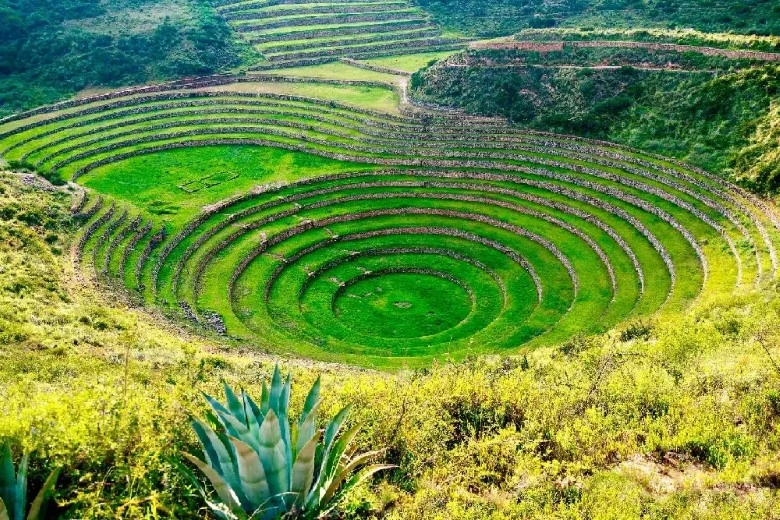
Advantages of visiting the Sacred Valley of the Incas in March
- Fewer tourists: Since it’s low season, you can avoid crowds at places like Pisac and Ollantaytambo.
- Lower prices: Rainy season means reduced hotel and tour rates.
- Lush scenery: The moisture intensifies the color of the vegetation, creating photogenic landscapes.
- Mild weather: Temperatures are neither too hot nor too cold, ranging between 43 °F and 59 °F.
Disadvantages of visiting the Sacred Valley of the Incas in March
- Frequent rain: It often rains in the afternoon and may make some sites harder to access. It’s best to schedule your tours in the morning, when rain is less likely.
- Reduced visibility: Fog or low clouds can block panoramic views.
- Slippery trails: Dirt paths can become muddy and harder to walk. If you plan to visit the Sacred Valley in March, we recommend bringing non-slip hiking shoes.
- Mosquitoes and humidity: Be sure to pack insect repellent and clothes suitable for a humid climate.
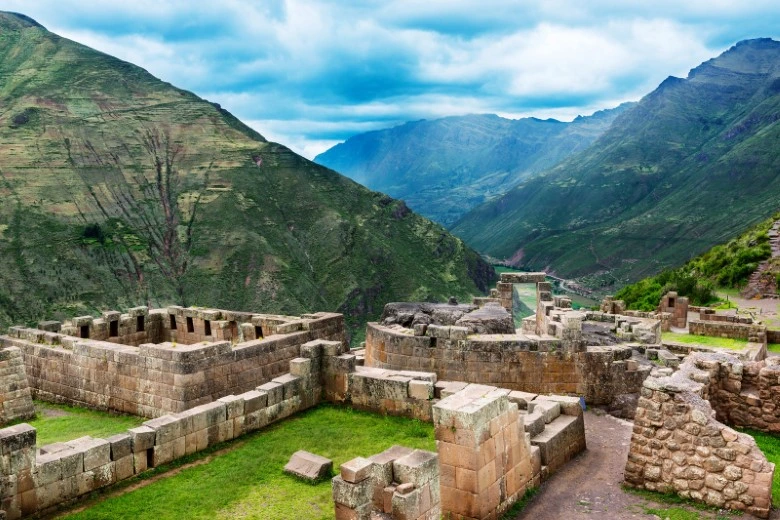
Best places to visit in the Sacred Valley of the Incas in March
- Pisac: Famous for its handicraft market and ruins atop a ridge. Less tourist traffic makes for a better visit.
- Ollantaytambo: A stunning Incan fortress and gateway to Machu Picchu.
- Moray: Incan agricultural laboratory with unique circular terraces.
- Maras Salt Mines: Over 3,000 salt pools—a spectacular sight.
- Chinchero: Known for traditional weaving and panoramic views of the Andes.
- Urubamba: The heart of the valley, offering great dining options and a comfortable base for tours.
Things to Do in the Sacred Valley of the Incas in March
- Archaeological tours: One- or two-day trips that include Pisac, Moray, and Maras.
- Local markets: Visit the Pisac or Chinchero markets for crafts and textiles.
- Trekking: Short hikes between Andean villages, adjusted for weather.
- Cooking classes: Learn to prepare Andean dishes with local communities.
- Landscape photography: Post-rain morning light enhances colors.
- Cultural experiences: Weaving workshops with Quechua communities.
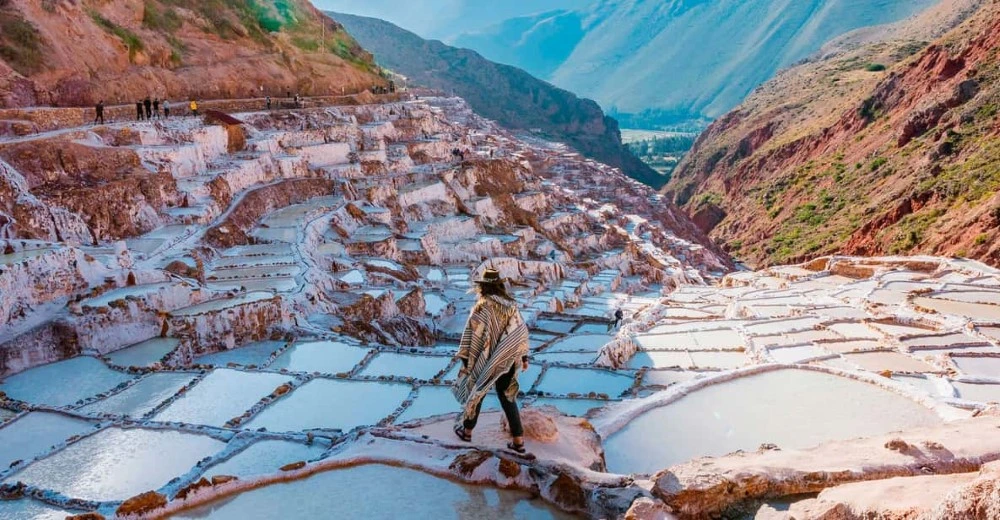
Travel tips for the Sacred Valley of the Incas in March
- Must-pack items: waterproof jacket, hiking boots, hat, sunscreen, and a compact umbrella.
- Layered clothing: thermal shirts, a lightweight fleece, and a rainproof outer layer.
- Sun protection: Even on cloudy days, the average UV index of 3 means you need sunscreen and sunglasses.
- Hydration and acclimatization: Drink plenty of water and spend a couple of days in Cusco to avoid altitude sickness.
- Book in advance: Tours may adjust depending on the weather, so early booking is recommended.
- Bring cash: Many small towns don’t have ATMs or accept cards.
- Travel insurance: Make sure it covers outdoor activities at high altitude and possible weather-related disruptions.
Frequently Asked Questions about the Sacred Valley of the Incas in March
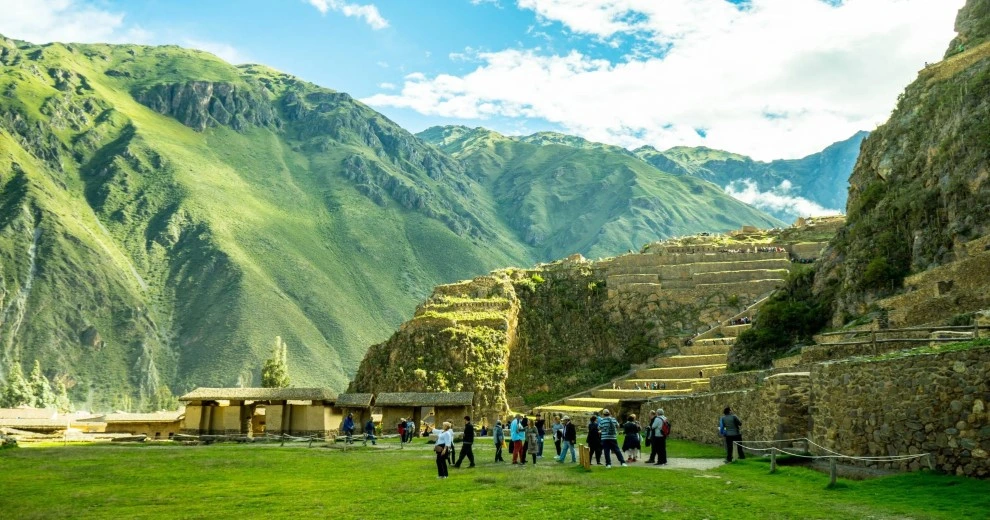
1. What should I pack for the Sacred Valley in March?
Bring waterproof gear like a rain jacket or poncho due to the rain, comfortable and water-resistant hiking shoes, sun protection (sunscreen, sunglasses, and a hat) due to high UV radiation, and layered clothing to adapt to changing weather, including a warm layer for the cooler nights.
2. How can I acclimate before visiting the Sacred Valley in March?
It’s best to spend 1 to 2 nights in Cusco, drink coca tea, ascend gradually, rest often, and stay well hydrated.
3. Are day tours to the Sacred Valley possible in March?
Yes. Despite the rainy season, tour operators continue to offer daily trips, and many routes remain accessible with the right precautions to ensure a safe experience.
4. Is it a good idea to visit Machu Picchu from the Sacred Valley in March?
Yes, it’s a great option. Although it’s the rainy season, mornings are usually drier, and fewer visitors allow you to explore the circuits more peacefully and enjoy the site more fully.
5. What’s the best time to visit the Maras Salt Mines?
Early morning is ideal, as the soft light highlights the salt pools’ shimmer, creating perfect photo opportunities and a quieter visit.
6. Do I need a guide to visit Moray and Maras in the Sacred Valley?
It’s not mandatory, but having a local guide enriches the experience, providing valuable insights into Incan agricultural engineering, the site’s history, and its cultural significance.
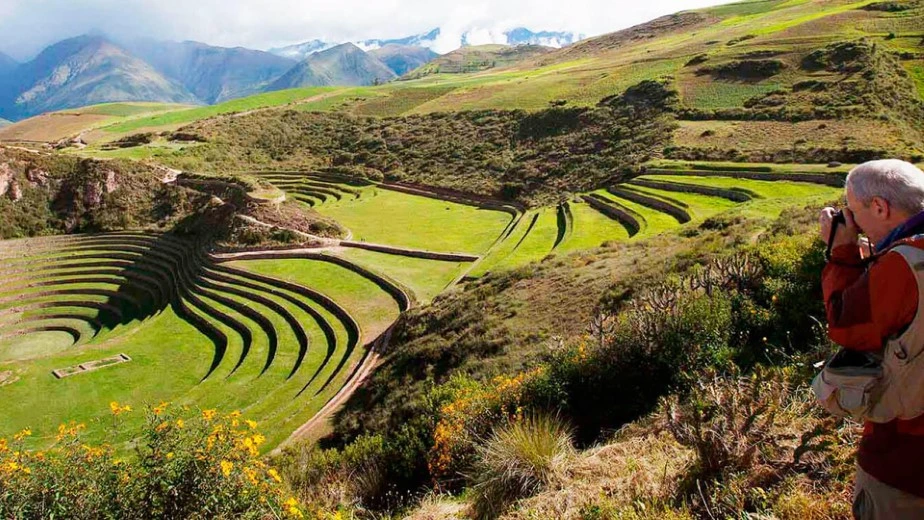
Visiting the Sacred Valley of the Incas in March is an adventure that combines the calm of low season with the beauty of lush, rain-fed landscapes. With the right clothing, good acclimatization, and preparation for rain, you’ll enjoy an authentic experience full of history and culture. Book your March Sacred Valley adventure now with Travel Peru Agency.
Sacred Valley of the Incas Tours You Might Like:
- Sacred Valley VIP – 1 Day
- Sacred Valley VIP, Machupicchu – 2 Days
- Sacred Valley Vip, Machu Picchu, Palccoyo – 5 Days
- Sacred Valley vip, Machupicchu, City Tour, Rainbow Mountain – 6 Days
- City Tour, Sacred Valley vip, Machupicchu, Rainbow Mountain, Humantay Lake – 6 Days
- Sacred Valley, Machupicchu, Manu Cultural Zone, Red Valley, Rainbow Mountain – 8 Days
Explore the Sacred Valley of the Incas in February — discover the best places to visit and more.
➜ Sacred Valley of the Incas in February: What to See, Pros and Cons
Find out everything you need to know about your Sacred Valley trip in April, during the rainy season.
➜ Sacred Valley of the Incas in April: Everything You Need to Know Before You Go
